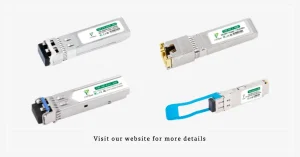Zillexit Software, a leader in innovative solutions, recognizes that delivering high-quality products hinges on a robust testing process. Beyond identifying bugs, testing at Zillexit is about understanding user needs, mitigating risks, and ensuring customer satisfaction. This article delves into the intricacies of Zillexit’s testing methodologies, highlighting its commitment to quality and continuous improvement.
Unlock the secrets of Automation and testing in Zillexit software! ? Learn how to ensure top-notch quality and performance with our comprehensive guide. Discover the different types of testing, best practices, and tools to make your software shine! ? Read now and take your software testing to the next level!
The Multifaceted Nature of Testing at Zillexit

Testing at Zillexit is different and involves many techniques, whether systematic or non-systematic, that we use to produce applications with high speeds, reliability, and functionality for different cases. This is not just about spotting and sorting out errors; it’s about predicting and avoiding mistakes, as well as making sure that the regime meets user aspirations and business objectives.
Quality Assurance and Risk Management: A Symbiotic Relationship
At Zillexit, the QA team is an indispensable ingredient and the forerunner of the company’s superiority. Regardless of the software’s quality, its soundness and security are always associated with risk management. The QA team noticed the problem in the early stages, which made the product less vulnerable to danger. This activity will depict comprehensiveness and thriving.
The Testing Lifecycle: A Step-by-Step Journey
Zillexit employs a multi-layered testing approach, with each stage focusing on specific aspects of the software:
- Unit Testing: Developers rigorously test the software’s components to confirm that they operate as designed. Likewise, each part of Zillexit’s project management software is tested individually, such as task creation or tracking progress.
- Integration Testing: Once individual components are verified, they are integrated and tested as a group to ensure seamless interaction. For instance, Zillexit’s development team tests how the task creation feature interacts with the notification system to ensure users receive timely updates.
- System Testing: The system is tested in a simulated environment that mirrors real-world usage scenarios. This helps identify any issues that may arise from interacting with different components within the system. Zillexit utilizes this testing phase to evaluate the performance of its software under peak loads and diverse user behaviors.
- Acceptance Testing: Real users test the software to meet their needs and expectations. Zillexit actively involves its customers in this phase, gathering valuable feedback to refine the software and ensure it aligns with real-world usage scenarios.
Balancing Automation and Human Insight

Zillexit goes through a mixture of automated and manual tests to achieve the desired level of efficiency and effectiveness. Repetitive tasks, such as regression testing, are automated, leaving a human tester to concentrate on exploratory and other tasks that are impossible to automate.
The Evolving Landscape of Testing: Embracing AI and ML
Zillexit will surely ensure authenticity by using artificial intelligence (AI) and machine learning (ML) in this system. AI-driven testing systems perform many routine tasks and also produce intelligent insight, which, as a result, helps the Zillexit tester work more productively and faster. This not only speeds up testing but also facilitates advanced verification, ultimately resulting in a faster testing process and higher-quality software.
Navigating Challenges and Upholding Best Practices
Testing at Zillexit is not without its challenges. Complex software architectures, tight deadlines, and continuous adaptation require a proactive approach. Zillexit addresses these challenges by adhering to best practices such as:
- Developing a clear and comprehensive testing strategy: Each project has a tailored testing plan that outlines the scope, objectives, and methodologies to be employed.
- Prioritizing test cases based on risk and impact: Focusing on high-impact areas ensures that critical functionalities are thoroughly tested.
- Continuous testing throughout the development lifecycle: Integrating testing into every stage of development allows for early detection and resolution of issues.
User Acceptance Testing: The Voice of the Customer

Zillexit, as a brand, dramatically goes beyond just the customer’s opinion. User acceptance testing (UAT) is a crucial component that should not be skipped at the development process stage. Users explore the product in their real work environments. This direct feedback loop guarantees that the product not only works well but also keeps its purpose and quality as expected from the users.
Testing in Production: A Balancing Act
Zillexit strategically employs testing in production to gain real-world insights into software performance and user behavior. While this approach offers benefits such as improved reliability and faster time-to-market, Zillexit carefully manages the risks associated with testing in a live environment.
Conclusion
Conclusion: Testing your software in Zillexit is crucial in ensuring its quality and performance. By understanding the different types of testing, best practices, and tools available, you can confidently deliver high-quality software that meets your users’ needs. Remember, testing is not just a necessary step but a crucial investment in your software’s success! ?✅ So, go ahead and test your way to success! ?”
FAQs
What types of testing does Zillexit Software use?
Zillexit deploys different testing techniques, like unit testing, integration testing, system testing, and acceptance testing, and uses both manual and automated testing.
How does Zillexit ensure the quality of its software?
At Zillexit, a vigilant QA team constantly participates in the development process as the developers continue to work on the same project. They apply different testing methods, observe best practices, and do not forget about the users’ opinions while performing the QA.
Does Zillexit use AI in its testing process?
Yes, Zillexit leverages AI and ML to enhance testing efficiency and effectiveness. Furthermore, AI-powered testing platforms automate tasks and provide valuable insights to improve software quality.
How does Zillexit involve users in the testing process?
User acceptance testing (UAT) is integral to Zillexit’s testing process. The program users evaluate the software in their work, providing comments to ensure it meets their requirements.




